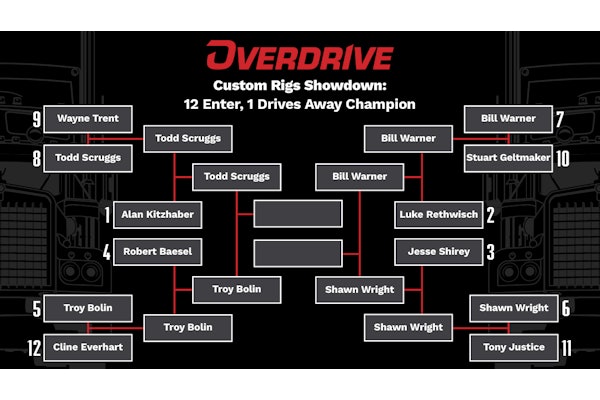As regular readers will know, I feel there’s a serious need for driver pay reform. I've recently pointed out a simple structure through which to begin the switch to an hourly-pay standard for OTR drivers. In some ways, a shift has been in the works for some time, with some fleets large and small having already started their own version of reform with guaranteed weekly minimum salaries, and many others offering detention pay. Yet many of the latter expect drivers to give away the first two hours sitting at the docks without compensation. No employee in any profession should be expected to give away their time without payment.
According to the American Transportation Research Institute (ATRI), between 2014 and 2018 the detention problem only got worse, creating a cascading effect on safety, and on-time pickups and deliveries. Since the electronic logging device mandate came into play in the last year of ATRI’s study of the problem, there’s some evidence little has changed.
 In Overdrive’s recent State of Surveillance survey, just 15% of respondents earmarked improved load/unload times as a result of widespread location-track capabilities now available.
In Overdrive’s recent State of Surveillance survey, just 15% of respondents earmarked improved load/unload times as a result of widespread location-track capabilities now available.
But getting companies to step up and take responsibility and actually pay for all of the driver’s time is just one component. With the Transportation Research Board's compensation and safety study currently in process, we could see another piece of the jigsaw puzzle fill in the picture.

In my simple opinion, another step in the process of pay reform and fair treatment is disabusing many drivers and others around trucking of a notion that's been around since at least the 1970s, that the federal Labor department, Social Security or other agency classifies OTR truckers as "unskilled" labor. It is high time truck driving is more readily recognized by those within and without for what it is -- a skilled trade, as has been noted in these pages before.
[Related: Truckers are classified as 'unskilled labor'? Nope]
Skilled trades typically involve specified technical training, usually a mixture of traditional classroom training and hands-on training directly correlated to the field the trainee is entering.
Skilled workers are critical to our way of life and economy. Without them we would not have public buildings, paved roads, cars, homes, or other important things needed in society. Most wishing to pursue a career in a skilled trade need to earn certification or an associate degree. These fields yield opportunities in industry as welders, mechanics, machinists or in various other service sectors -- technicians, nurses, medical assistants, in construction as electricians, plumbers, carpenters and concrete workers. And all are dependent on CDL drivers to deliver their supplies and goods.
Before I became a trucker, I was a heavy equipment operator, trained and certified by the U.S. Marine Corps. After the Marine Corps I became an apprentice with the Local 400 in Montana, certified to operate heavy equipment working in heavy highway construction. I never questioned if what I was doing involved a skill. Similar skill levels are required to safely operate a tractor-trailer over-the-road. When I entered the trucking world in 1993, the industry was transitioning from the chauffer’s license to the CDL. Many hoped this action would further elevate truckers on the skilled labor classification continuum, but training standards weren’t in place commensurate to such elevation. Too many programs were available, with no real standard for training, just performance requirements that had to met with knowledge and skills tests.
However, after years of lobbying, that has now changed in some respects. Entry-level training standards are in place, necessitating both classroom and on-the-road training before any driver takes the skills test for the CDL. That’s not to mention codified requirements for multi-trailer combinations, the various endorsements that are available and more.
Recently we celebrated National Public Service Day, which is the least we can do to honor and celebrate those who make our lives easier and safer. While it’s mostly meant to recognize the service of federal and state employees such as police, EMTs and firefighters, in reality this day of celebration should include teachers, lawyers, journalists, all medical personnel, and ... yes, truckers. Without these workers, we would not only be unhealthy, uneducated and uninformed, we would also be homeless, hungry and naked. Truckers bring all of these necessities to the public.
Having said all of that, I know it’s clear that to become an OTR truck driver is to become a skilled professional, certainly requiring certification. Recognition of that fact should be further emphasized on the path to pay reform by all trucking lobby groups, from ATA and OOIDA to CDL Drivers Unlimited and the National Association of Small Trucking Companies. And every truck driver in the nation should be doing the same. With greater respect and recognition will come better compensation, which will go a long way toward bringing new blood into trucking.
[Related: Demanding an hourly-pay standard for truckers: 'A rising tide lifts all boats']









